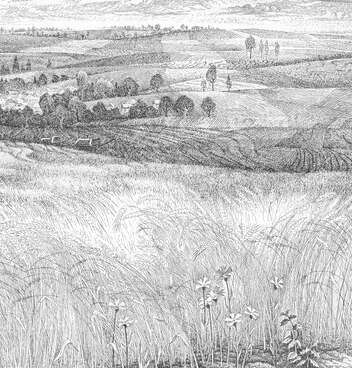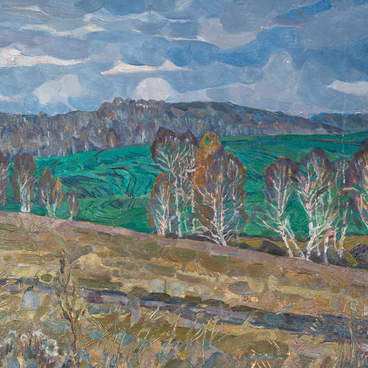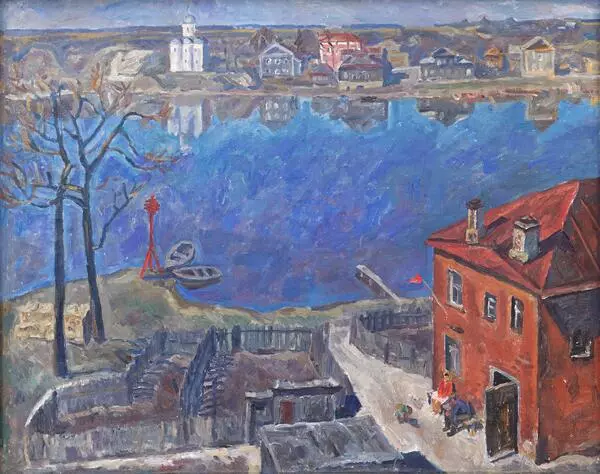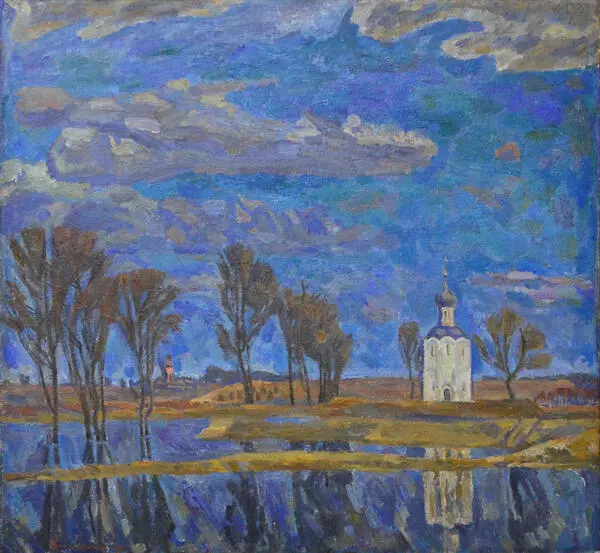Eduard Georgievich Bragovsky was born in 1923 in Tiflis (Tbilisi). At the age of four, he moved with his parents to Moscow, where he studied at a children’s art studio. After World War I, he began special art education at the Vilnius Art Institute, and continued his studies at the Surikov Moscow State Art Institute.
Among his teachers were outstanding Soviet artists, including Vasily Vasilyevich Pochitalov, Vasily Kirillovich Nechitailo, Viktor Grigorievich Tsyplakov and Pyotr Vasilyevich Malkov. His graduation work “Lenin Hunting” was supervised by Pyotr Ivanovich Kotov.
Eduard Bragovsky’s style was described as “temperamental, energetic, impetuous both in his brushstrokes and in the choice of color palettes, and in the plasticity of the form. Very bold in the implementation and intensity of the plot, it is not at all detached from reality.”
The space in the painting “Suzdal. Pink House” is saturated with air and light. It is broad and free, but at the same time subordinated to a certain system of his artistic vision of the world. The artist used broad brushstrokes; hence, the viewer should look at the picture from a distance.
Eduard Bragovsky depicted a February day. Winter, like a shroud, enveloped the earth in snow. The trees are tired and heavy from the frost, they are waiting for awakening. In addition, the painting shows the power of the ancient Suzdal architecture.
Eduard Bragovsky was close to Formalism. Pure color prevails in his painting. The artist used the geometry of architectural forms as a connecting rhythmic foundation of the composition. At the same time, Bragovsky clearly aspired to a rich decorative color scheme. Using his own artistic means, he conveyed a romantic element in the image of what he saw.
The art critic Radoslava
Konechna wrote about Bragovsky as follows,





